My Paris KitchenRecipes and Stories
A collection of stories and 100 sweet and savory French-inspired recipes from popular food blogger David Lebovitz, reflecting the way Parisians eat today and featuring lush photography taken around Paris and in David’s Parisian kitchen.
It’s been ten years since David Lebovitz packed up his most treasured cookbooks, a well-worn cast-iron skillet, and his laptop and moved to Paris. In that time, the culinary culture of France has shifted as a new generation of chefs and home cooks—most notably in Paris—incorporates ingredients and techniques from around the world into traditional French dishes.
In My Paris Kitchen, David remasters the classics, introduces lesser-known fare, and presents 100 sweet and savory recipes that reflect the way modern Parisians eat today. You’ll find Soupe à l’oignon, Cassoulet, Coq au vin, and Croque-monsieur, as well as Smoky barbecue-style pork, Lamb shank tagine, Dukkah-roasted cauliflower, Salt cod fritters with tartar sauce, and Wheat berry salad with radicchio, root vegetables, and pomegranate. And of course, there’s dessert: Warm chocolate cake with salted butter caramel sauce, Duck fat cookies, Bay leaf poundcake with orange glaze, French cheesecake…and the list goes on. David also shares stories told with his trademark wit and humor, and lush photography taken on location around Paris and in David’s kitchen reveals the quirks, trials, beauty, and joys of life in the culinary capital of the world.
David Lebovitz
 David Lebovitz is a sought-after cooking instructor with an award-winning food blog (davidlebovitz.com). Trained as a pastry chef in France and Belgium, David worked at Chez Panisse in Berkeley, California for twelve years. He now lives in Paris, France, where he leads culinary tours of the city.
David Lebovitz is a sought-after cooking instructor with an award-winning food blog (davidlebovitz.com). Trained as a pastry chef in France and Belgium, David worked at Chez Panisse in Berkeley, California for twelve years. He now lives in Paris, France, where he leads culinary tours of the city.
My Paris Kitchen is the latest book from David Lebovitz. Beautifully photographed, it is a compelling combination of stories and recipes. We are very pleased to have had the opportunity of talking with David Lebovitz about his latest book.
Booksaboutfood.com (BAF): How are things in Paris these days?
David Lebovitz: Cold and my heat doesn’t work so somebody is coming over, hopefully they’ll replace everything so … Someday, I’ll have heat.
BAF:Is it safe to say that this is a little more ambitious than your other books?
David Lebovitz: Well, it kind of started out very different, not very different but quite different and when I realized there was kind of a story to tell…like a blog story, the recipes tell the story in a lot of ways. It did become a bit more ambitious but as I kept going, I felt like the material was there and I needed to elaborate on it.
Then after the photographer came and we went through the city, I took him around, I was like, “Oh, I need to write a little more about this and this and this.” It kept growing and so I said, “Stop.”
BAF: Was it hard to find a unique take or a new perspective on the subject matter?
David Lebovitz: In some ways it was because a lot of stuff that’s being done now like the contemporary French cooking, it’s very difficult to make at home. The chefs are doing things like a slice of pickled turnip, a bit of squab stock, a swirl of something. Well nobody really wants to make that at home. It’s great to go out and get it, so I sort of blended a lot of classics into the book, French classics because actually I like to make those as well and then I added my own twist to certain things and I went through a few things, but it’s not all French cooking.
BAF: They say that French cooking is changing a little bit. It is actually accepting more ethnic flavors and cuisines into its repertoire.
David Lebovitz: It definitely is and foreign restaurants, you can now get reasonably authentic versions of Mexican food and Korean food in Paris. Previously, everybody has always ‘Frenchified’ everything or adjusted it for local taste because French people don’t like spicy food or a lot of seasonings but that’s changing and it’s kind of encouraging.
People ask me if I tone down my food for local taste because the other night I made Mexican food and I said “no” because that’s what it is. Indian food is spicy and if you take out the spices, that’s not Indian food. It’s like taking the butter out of Beurre Blanc, that’s what the taste is.
BAF: Certainly you’ve been in Paris a number of years. Does the city still surprise you and inspire you or infuriate you?
David Lebovitz: All three, often at the same time, sometimes separately. It is a very inspiring city. There’s so much material here. I can walk to the store and buy … I could buy whatever, buy some apples and there’s a story there. It’s a city full of stores, which is great. It is infuriating because a lot of times, the customs here are very different than ours and it’s not their fault or our fault because the way things that are done here can be very challenging, even for French people.
BAF: You certainly documented that well in The Sweet Life in Paris. Which was a terrific book. Poignant at times and absolutely laugh out loud hysterical at others and I think anybody who has been to Paris knows what you’re talking about. Anybody who hasn’t been might not believe you.
David Lebovitz: Well, French people love to criticize themselves. I mean, they’re very big on that and I actually think flaws are very interesting. It’s very hard for me to write a story about how beautiful and wonderful a place is because all you have to do is say, “Oh, it’s amazing” but there’s always a story that’s much deeper. It’s like being in a relationship. You just say, “Oh, it’s amazing, everything was great.” It’s actually people’s flaws that I find charming and interesting contained within the City of Paris.
I mean it’s like New York. It’s not just Time Square. It’s not like, “Wow, let’s go to the top of the Empire State Building.” There’s a lot of stuff going on in the city, outside of the city that makes New York City such a great place.
BAF: I wanted to ask you about the photographs.
David Lebovitz:Before I started the book, when I was just beginning, I told the publisher, I said I want Ed Anderson to shoot the photos. If he had shot a book called My Sweet Mexico about Mexican dessert shot in Mexico and he really caught something very special about Mexico. He caught the real Mexico and I wanted someone who was able to show not just the beautiful pastry shops of the City of Paris but also the ethnic neighborhood, the streets, the graffiti, the waiters pushing past you, the funny people at the market that cut up chickens for me, the different stuff, the mustards on display at the supermarket and so forth. Ed is a very realistic photographer so I was thrilled to work with him.
BAF: You’ve got some terrific recipes, how did you narrow them down? What was your criteria for including a recipe in the book?
David Lebovitz: They’re kind of wasn’t any except they were all things that I’d like to make. Sometimes, they go out of order. Sometimes I touch on things like ribs and so forth because that’s what I cook. The book is talking about my Paris, what I make here so I did things like smoky pork, like barbeque style pork, Israeli pistachio couscous and those are not necessarily things you’d get in a French restaurant but they’re part of my Paris kitchen and I use French ingredients to create these things. There’s a lot of texts in the book so the stories explain why things are there, how I shop, what I buy, what I like, what infuriates me…That’s your word, not mine.
BAF: Frustrating or infuriating Paris is always fascinating. The stories are certainly terrific. They are great to read. It’s almost two books at one.
David Lebovitz: Actually, that’s a very good point and that’s what it is and while we were trying to decide on the subtitles for the book, we spent a couple of weeks and all of a sudden, it’s like, “Let’s just take stories and recipes” and I was actually recently reading a book by Joe Yonan from the Washington Post who wrote a book Eat Your Vegetables about cooking for one and actually got into bed with the book and I started reading it and I was like, “All these stories are really great.”
The thing about the internet, people look for recipes, they might be looking for top noch. I love getting into bed with a book and reading and then I bookmark it and I make the recipes so I wanted my book to be a storybook. There are these stories I just needed to tell and I hope that people like them.
BAF: I’m sure they will. They really draw you in. It’s relatable. The French fries, for instance, when you talked about just tying them a knot and leaving them on the plate.
David Lebovitz: I know. I was like, “What’s up with the French fries?”
What’s funny because my partner thought it was funny that Americans don’t have deep fat fryers. We like to leave it to the professionals. It’s hard to get good deep fried food at home.
BAF: What changes are you observing in French food these days?
David Lebovitz: One thing I’m actually noticing is that there is much more emphasis on freshness and organic ingredients. People are starting to really think more about farm-to-table kind of food. In France for so many years it was a given, like with everything of course, there’s going to be natural and from the farm so there’s much more emphasis on that again. People are shopping more from producers themselves and trying to get better produce and things, even local things. There’s better fast food now and when I say fast food, I don’t mean like Burger King or McDonalds but there’s actually a lot of options for snack kind of food because people don’t have the time for the three-hour lunch.
Now, you can go to these places and get your own salad and fresh food and so forth. Those are two things that are very popular and also, the third thing is as we discussed is people are actually much more interested in foreign food. The Mexican restaurants are busy, the authentic ones. The Japanese places on the rue Saint-Anne have lines out the door, so people are interested, especially young people. They’re traveling and they’re more global now. The internet, they’re much more open to different kinds of eating.
It is. The thing is there’s not a great understanding of foreign food here so people don’t know what Mexican food is. A lot of them don’t even know what Spanish or Italian food is.
They haven’t had the immigration like in America. We have the Italian neighborhood. We have the Mexican neighborhood but they haven’t had that same immigration, different kinds of groups like that to that extent in France.
BAF: I guess that’s changing?
David Lebovitz: It’s sort of a complicated issue and I was recently in San Francisco and I stayed with a friend of mine who is Chinese American and she’s like, “Why in Europe is the Asian food so bad?” She’s like, “You have the ingredients, you have the Asian communities” and I talked to people and most people seem to say, “Well, it’s because it’s not like the middle class of those communities that appreciate it.” Societies are much stratified ethnically in Europe. We don’t have the same mix of cultures so it’s a complicated question and we have a different subject all together.
There is an Indian quarter in Paris that’s…actually, there’s a few quite good restaurants but there’s not a lot of them, but more and more, you see French people in them and it’s just a lot of them are unfamiliar still with them. They don’t know about them as much as we do and also, as Americans, one of our qualities is we always want to do something and then do it really well. The hipster movement, like let’s make our own whiskey in the basement. How can we make this cake better? Let’s grow our own … raise their own chickens and let’s do all these, whereas other countries don’t necessarily do it that way.
Yeah. Then they get criticize quite a bit but on the other hand. They’re doing all the stuff. Making their own chocolate and beer and everything.
BAF: Did you have an overall goal with the book? What was your vision when you started out?
David Lebovitz: Like I said, it took different shapes since I went along so the tone of the book changed because it took me so long to write, it took me two years and what’s interesting is the longer you lived somewhere, the more you … you keep looking at it differently.
Well, the first year you move there, it’s like WOW! The second year, it’s like, “Okay, okay, okay. You have to this, this and this.” The vision change and I’m much more mature. When I finished the book, I was like, “Oh, I’ve grown a lot.” If you read My Sweet Life in Paris, it was written shortly after I moved here. It’s more fun and topical. In this one, I was being more introspective and thoughtful.
BAF: Was it the eyes of a local as opposed to a new arrival?
David Lebovitz: Yeah, much more so.
BAF: How does it feel being a local now?
David Lebovitz: Well, I’m so not a local. There’s a funny story that says like you want them to sort of treat you like a foreigner because they’re still nice to you. That’s an article in one of the French newspapers, it’s about the Parisians not being nice to tourists and they had different stories and one guy was being interviewed he said they’re fine with the tourists, it’s other Parisian that they’re not nice to. This is a French guy talking. I don’t know if I consider myself a local but Paris once again, it’s a city that’s becoming a big mix and there’s a lot of Americans, English, Latin, North Africans, there’s Asian and so forth so I’m part of the mix and people say to me, they go, “Aren’t they mean to you because you’re American” I’m like, “Not at all.” They’re fine. They’re used to foreigners here.
BAF: You mentioned E.Dehillerin. Do you still go there or do you probably don’t have much room in your kitchen from much of their stuff.
David Lebovitz: Yeah, I don’t have any room or any space. When I moved, I was like, “Oh my God” so I’m pretty stocked. The only time I buy cookware is if I’m at a flea market to find like vintage something that’s really cool.
BAF: What’s next for you?
David Lebovitz: Well, I don’t know. I’m enjoying working writing my blog which I always do. I’m spending a little more time trying, thinking more and featuring some more local places in Paris, going to different restaurants and pastry shops and so forth and writing about them. I’m going to be going on a book tour on April and May and I’m leading my annual culinary tour at the end of this month, which is always fun although a bit of a challenge because in Paris, it’s very difficult to pin people down and when you’re leading people around the city and planning visits and tasteing things and so forth, it’s kind of nice to get confirmation in writing.
BAF: Well it’ll add a certain texture of authenticity to your clients.
David Lebovitz: Yes. I always tell people to expect anything.
Booksaboutfood.com © 2014
“David Lebovitz is a rare specimen: both a terrific storyteller and a brilliant, uncompromising recipe writer. His lighthearted, almost satirical style is combined with far-reaching knowledge of food and its context. I’d follow him blindfolded on this journey to the City of Light.”
-Yotam Ottolenghi, coauthor of Jerusalem
“David Lebovitz is a chef who can write better than most food writers, a writer who can hold his own in any restaurant kitchen in the world, and, most of all, a guy who simply rejoices in food and cooking. This may be his most personal cookbook, describing all facets of his cooking life in Paris, with great stories, information, and recipes. I need two copies of this book: one for the kitchen and another by my reading chair.”
-Michael Ruhlman, author of Ruhlman’s Twenty
“Opening this beautiful book is like opening the door to David’s Paris. Of course, you get great recipes, but you also get to wander the world’s most delicious city with a friend who knows it well and is excited to share it with you. A treat for those of us who love French home cooking, Paris, and David’s take on it all.”
-Dorie Greenspan, author of Around My French Table
“David Lebovitz is the ultimate American in Paris and this book is the ultimate insight into his beautiful and delicious world. I am beyond jealous!”
-Suzanne Goin, author of The A.O.C. Cookbook
Cherry tomato crostini with homemade herbed goat chesse
Steak with Mustard Butter
French fries
Chocolate–dulce de leche tart
_______
Cherry tomato crostini with homemade herbed goat chesse
(tartines de tomates cerises, chèvre frais maison aux herbes )
Serves 4
I like to roast the tomatoes ahead of time—up to 8 hours in advance—so they have time to marinate in their own savory juices, which caramelize slightly, making a nice bit of sauce to drizzle over the top.
herbed fresh goat cheese
2 cups (480g) whole goats’ (or cows’ ) milk yogurt
1 generous tablespoon very finely
minced mixed fresh herbs (be sure to include chives, as well as an assortment that could include thyme, sage, basil, or flat-leaf parsley)
1 tablespoon minced shallots
1 teaspoon minced garlic
¾ teaspoon sea salt or kosher salt
Generous pinch of cayenne pepper
roasted cherry tomatoes
1½ pounds (680g) cherry tomatoes, stemmed and halved
3 tablespoons olive oil
2 cloves garlic, peeled and thinly sliced
Handful of fresh herbs (any combination of rosemary or thyme sprigs, bay leaf, and basil or sage leaves)
Sea salt or kosher salt and freshly ground black pepper
toasts
4 thick slices bread, such as ciabatta,
a country bread, or a sourdough
that’s not too dense
Olive oil
1 clove garlic, peeled
A few leaves of fresh basil, sage, or flat-leaf parsley, for garnish
1 To make the herbed goat cheese, line a mesh strainer with a few layers of cheesecloth or muslin and set it over a bowl. Scrape the yogurt into the lined strainer, fold the cloth over the yogurt, and refrigerate for 24 hours.
2 Put the strained yogurt into a bowl and mix in the herbs, shallots, garlic, salt, and cayenne pepper. Refrigerate until ready to use.
3 To roast the tomatoes, preheat the oven to 350ºF (180ºC). Combine the cherry tomatoes, olive oil, garlic, and herbs in a baking dish or pan that will hold them all in a snug single layer. Season with salt and pepper, mix well, and spread them out on the
baking dish.
4 Roast the tomatoes for about 45 minutes, stirring once or perhaps twice during baking, until they’re wilted and their juices are starting to concentrate—and perhaps brown a bit—in the bottom of the baking dish. Scrape the tomatoes and any juices into a bowl and let cool to room temperature. They can sit up to 8 hours, and
they improve the longer they sit.
5 When ready to serve, make the toasts. Preheat the oven to 350ºF (180ºC). Evenly brush the bread slices with olive oil. Place them on a baking sheet and toast for about 5 minutes, until light golden brown. Remove from the oven and when just cool enough to handle, rub the slices generously with the garlic clove. Let cool to room temperature.
6 To serve, thickly smear each piece of toast with the fresh herbed cheese. Pluck out the herbs and spoon the tomatoes and their juices over the toasts. Coarsely chop the herbs for the garnish, and scatter them over the top of each portion.
Steak with Mustard Butter and French fries
(steak frites au beurre de moutarde)
Serves 2
To make this bistro classic in my kitchen, I use a cast-iron skillet or grill pan that I get really hot, and then I sear the steak on both sides, cooking it medium-rare, which is the way I like it. My preferred cut is entrecote or rib-eye, and I ask the butcher to cut it into steaks that aren’t too thick since I like lots of surface area on my steaks. I rub them with chipotle chile powder to give them a bit of a smoky flavor.
It’s difficult to say exactly how long it will take a particular steak to cook to your liking since there are so many variables, but there is actually no truth to the rumor that if you cut a steak open a little and peek inside, all the juices will come gushing out and your steak will be dry. In fact, the best way to ensure a steak is dry is to overcook it. So feel free to peek inside if you need to.
Steak
2 (8-ounce/225g) rib-eye steaks
½ teaspoon hickory-smoked salt,
sea salt, or kosher salt
¼ to ½ teaspoon chipotle chile powder
1 teaspoon finely chopped fresh cilantro or flat-leaf parsley
Vegetable oil or clarified butter (page 327)
Freshly ground black pepper
mustard butter
2 tablespoons unsalted butter, at room temperature
2 teaspoons dry mustard or mustard powder
1 generous teaspoon Dijon mustard
1 Pat the steaks dry and rub them with the salt, chipotle powder, and cilantro. Refrigerate the steaks, uncovered, for at least 1 hour, or up to 8 hours.
2 To make the mustard butter, in a small bowl, mash together the butter with the dry mustard and the Dijon. Form it into two mounds and chill on a plastic wrap–lined plate.
3 Heat a little oil or clarified butter in a grill pan or cast-iron skillet and cook the steaks over high heat, being sure to get a good sear on each side. For rare steaks, cook 5 to 7 minutes total on both sides, or aller-retour (“to go and return”).
4 Remove the steaks from the pan and put on plates. Top each steak with a knob of the mustard butter and some pepper and serve with a big pile of frites.
French fries (page 219)
French fries
(Frites)
Serves 4 to 6
Although they didn’t invent them (the Belgians did), the French love French fries. Such is their devotion that after I attempted to make them at home in a large pot of oil on the stove without a lot of success (and making a big mess), a French friend told me every one in France has a deep-fryer at home. He was surprised when I told him that home fryers weren’t so popular in America, which he thought was odd, considering how well known Americans are for liking deep-fried foods.
Equally hard to believe is that good fries in Paris are not necessarily a given. I was once so discouraged by getting yet another plate of soggy frites that I tied them in knots and left them on my plate, which was whisked away after I ate everything else without a word from the waiter. When I asked a restaurant owner why the fries served at his place were so soft, he said, “I used to make them crispy, but too many customers complained.” Yowza. Who could complain about crisp fries?
At home, crisp fries were eluding me as well, until I switched to oven-baked fries, which are simple to make and a lot less messy. Soaking them in cold water allows them to brown up nicely in the oven and they get extra crispy on the outside. I toss in a big handful of sage leaves and some thyme sprigs—the sage leaves get crackly-crisp with the fries and they’re quite tasty to crunch on, and the thyme adds an additional bit of savory flavor.
Any russet potato will make good baked French fries. I leave some of the skin on, for a more handmade look.
3 pounds (1.3kg) potatoes
4 tablespoons olive oil
2 teaspoons sea salt or kosher salt
Fresh herbs, such as a big handful of sage leaves, a few sprigs rosemary or thyme, or a mixture of them
1 Peel the potatoes, leaving on a few strips of skin as you go. Cut the potatoes into
1/3 inch-thick (1cm) slices. Lay the slices on a cutting board and slice them into
1/3 inch-wide (1cm) sticks. Put them in a large bowl with very cold, lightly salted water, and let them sit for 1 hour.
2 Preheat the oven to 400ºF (200ºC).
3 Drain the potatoes and lay them on a kitchen towel. Rub them with the towel to dry them very well. Spray two baking sheets with nonstick cooking spray. Place the potatoes on the baking sheets. Dribble the olive oil over the potatoes and sprinkle with 1 teaspoon of the salt. Add the fresh herbs and mix everything together with your hands. Spread the potato sticks out in a single layer on each backing sheet.
4 Bake for 45 to 50 minutes, rotating the pans from front to back and top to bottom midway during baking. AS they bake stir the potatoes several times so they cook evenly. Once the fries are golden brown and crispy, remove the pans from the oven and serve.
Chocolate–dulce de leche tart
(tarte au chocolat et confiture de lait)
Serves 10
I wasn’t sure whether I was in the right supermarket aisle when I first saw sweetened condensed milk sold in tubes, like toothpaste, in France. It wasn’t until a French friend told me how much she loved to put the tube right into her mouth and squeeze the contents out that I got it. (Who says the French aren’t efficient?) After she explained this to me, I could see her thoughts drifting away, thinking about thatsouvenir of her childhood. I know that after I use a can of it to make my own dulce de leche, I can’t resist scraping the tin clean and licking the spatula, but the idea of buying (or eating) sweetened condensed milk in a tube does sound a little more efficace
Even more efficient is buying confiture du lait, or dulce de leche, which is sold in many cheese shops in Paris. The dense, glossy caramel paste is ladled from wide earthenware bowls, and I use it as a base for a variation on the classic tarte au chocolat, with a layer of bittersweet chocolate ganache concealing a layer of confiture de lait. There’s no hiding the fact that it’s one efficient way to get your fix of chocolate and caramel at the same time. Now if someone could figure out how to put both flavors into a tube so I could carry it around, that would be even more efficient than carrying around wedges of this tart, which you’ll be as tempted to do as I am.
This recipe was inspired by one that originally appeared in delicious.magazine.
chocolate crust
6 tablespoons (3 ounces/85g) salted butter, at room temperature
¼ cup (35g) powdered sugar
1 large egg yolk
1 cup (140g) all-purpose flour
1/3 cup (35g) Dutch-process or natural unsweetened cocoa powder
¼ teaspoon fleur de sel or other
flaky sea salt
filling
8 ounces (230g) bittersweet or semisweet chocolate, chopped
2 large eggs
1 ¼ cups (310ml) whole milk
½ teaspoon vanilla extract, or
1 teaspoon dark rum
1 cup (240g) dulce de leche
Flaky sea salt, for sprinkling over the tart
Whipped cream (page 337) or vanilla ice cream, for serving (optional)
1 To make the crust, in the bowl of a stand mixer fitted with the paddle attachment, beat the butter and powdered sugar on low speed just until smooth. Add the yolk, stopping the machine to scrape down the sides of the bowl, until it’s fully incorporated.
2 In a small bowl, whisk together the flour and cocoa powder. Add them to the butter mixture, mixing just until the dough comes together. Form the dough into a disk, wrap in plastic, and let rest for 30 minutes at room temperature.
3 Use the heel of your hand to press the dough into a 9-inch (23cm) tart ring with a removable bottom, getting the bottom as flat as possible and pressing the dough up the sides of the pan until it reaches the rim. Sprinkle the salt over the bottom of thedough and press it into the pastry. Put the pan in the freezer for 30 minutes.
4 Preheat the oven to 400ºF (200ºC). Line the chilled tart crust with aluminum foil and cover with a layer of pie weights or dried beans. Bake the tart shell for 15 minutes, remove the foil and pie weights, and then bake for 5 minutes more, until the tart shell feels set. Remove from the oven and decrease the oven temperature to 300ºF (150º).
5 While the tart is baking, make the chocolate filling. Melt the chocolate in a clean, dry bowl set over a pan of simmering water. Once melted, remove the bowl from the heat and set a fine-mesh strainer over the top.
6 Whisk the eggs in a bowl. Heat the milk in a saucepan, then gradually whisk the warm milk into the eggs. Scrape the mixture back into the saucepan and cook over medium heat, stirring constantly with a heatproof spatula, until it’s steamy and thickens slightly, about 3 minutes. (If it separates a bit, remove it from the heat, and whisk it vigorously to bring it back together.) Pour the custard through the strainer into the chocolate. Add the vanilla and stir until smooth.
7 Spread the dulce de leche over the hot tart shell in an even layer, being careful as you spread to make sure you don’t break the flaky bottom of the tart. (If the dulce de leche is very thick, let it sit in the tart shell for a minute or so, to let the heat soften it, which will make it easier to spread.) Set the filled tart shell on a baking sheet lined with aluminum foil, then pour the chocolate custard over the dulce de leche, smooth the top, and add a generous sprinkling of flaky sea salt.
8 Bake the tart for 20 minutes, and then turn the heat off and leave the tart in the oven with the door closed to glide to a finish, 25 minutes more. Remove from the oven and let cool before serving. Serve the tart with softly whipped cream (page 337), vanilla ice cream, or just as is.


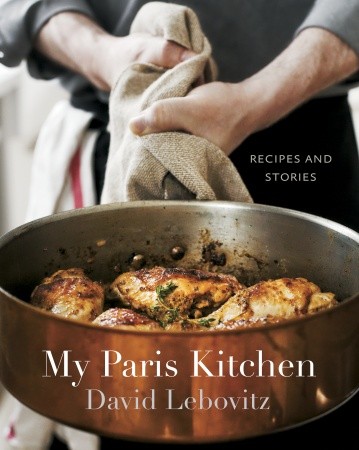




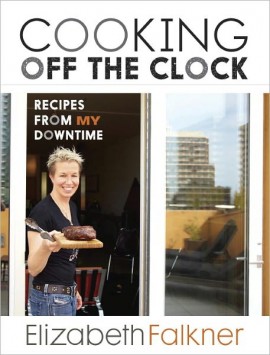
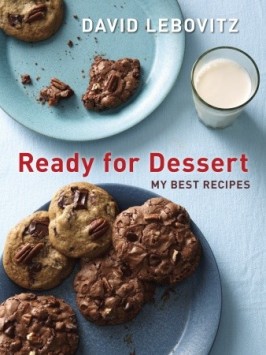
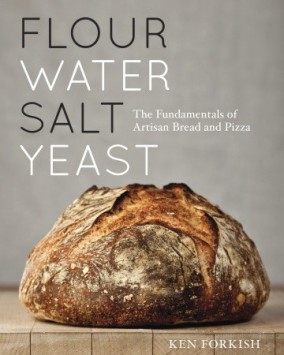
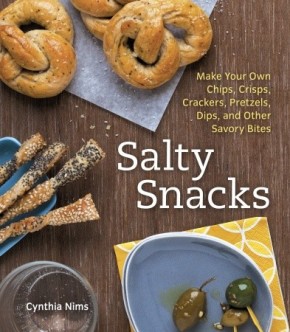
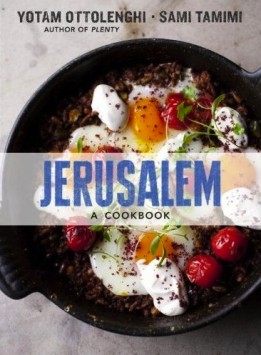
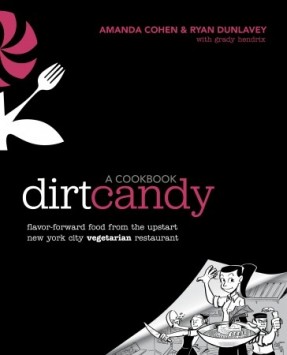
Leave a Reply